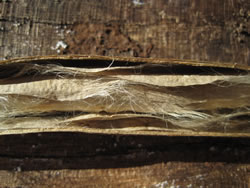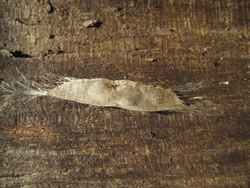Plant of the Week
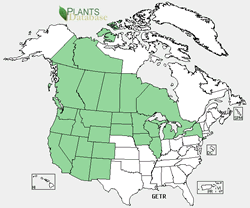 Catalpa speciosa range map. USDA PLANTS Database.
Catalpa speciosa range map. USDA PLANTS Database.
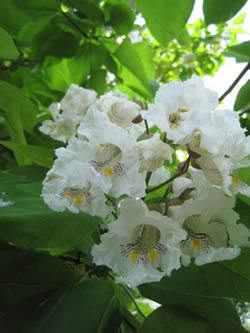 Flowers close up. Photo © David D. Taylor 2013.
Flowers close up. Photo © David D. Taylor 2013.
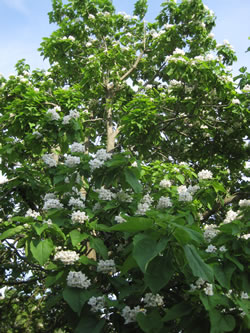 Portion of tree with flowers. Photo © David D. Taylor 2013.
Portion of tree with flowers. Photo © David D. Taylor 2013.
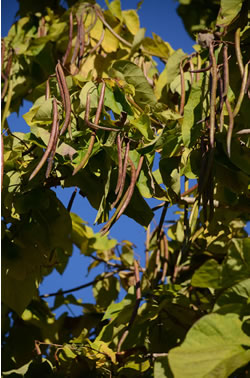 Fruits on tree. Photo © David D. Taylor 2013.
Fruits on tree. Photo © David D. Taylor 2013.
Northern Catalpa (Catalpa speciosa Warder ex Engelm.)
By David Taylor
Northern catalpa is a member of the Bignoniaceae, the Bignonia or Catalpa family. Species in this family range from woody vines to large trees. Other plants in the family include trumpet creeper (Campsis radicans) and crossvine (Bignonia capreolata). The family is mostly tropical and subtropical. Catalpas have soft brown wood often used for carving.
This tree grows to 30 meters (98 feet) although is usually shorter. It can reach a diameter of 76 centimeters (30 inches) or more. The bark is somewhat flaky and gray in color. The dark green leaves are large and cordate (heart shaped). Leaves are opposite or whorled and 18 to 30 centimeters (7 to 12 inches) long and 13 to 21 centimeters (5 to 8 1/4 inches) wide. The flowers are white with yellow stripes and purple spots inside. Flowers are up to 6 centimeters (2 1/4 inches) wide and are borne in clusters up to 20 centimeters (7 3/4 inches) long. The fruit is a narrow pod (capsule), up to 36 centimeters (14 inches) long which contains 100 or more winged seeds (see photos).
Northern catalpa is associated with low ground along streams, rivers and lakes, often in the open. It is widely planted as an ornamental tree. It is known from New England, except Vermont, west through New York, to North Dakota, and south to Texas, Colorado, Utah and New Mexico, east to Georgia and north to Pennsylvania, but is not recorded from New Jersey and Delaware. It is also known from Ontario.
This species flowers in May to June with fruit ripening in September to October depending on the part of the country in which it is found. Bees, wasps and flies visit the flowers. In some parts of the country, it is called cigar tree in reference to the long narrow fruits.


